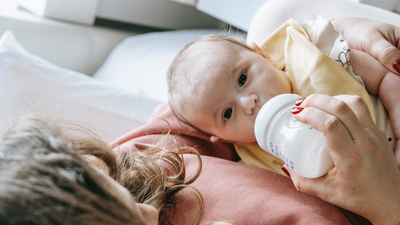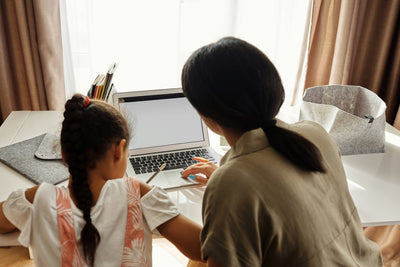What is Mastitis and How To Prevent It
What is Mastitis and How To Prevent It
By Jordan Berns
When you begin breastfeeding, it is natural to have some worry thoughts here and there. You might worry if your baby will latch easily, if you’ll produce enough milk, or may worry about breast and nipple pain. Breast and nipple pain can be a serious problem, but if treated seriously they can be reduced to a minor bump in the road. One of the problems that often arises with breastfeeding is mastitis.
Protect yourself from mastitis with this handy guide.
Mastitis is inflammation of the mammary (breast) tissue. Mastitis feels like a painful, hard spot in the breast that can look red or feel hot. An infection in the mammary glands can occur from plugged ducts, or from bacteria entering the breast through broken skin. Bacteria can enter the injured nipple through your environment or your baby’s mouth.
Doctors often cite preventative measures as the best cure for many ailments, and that rings true for mastitis as well.
There is some debate about how common this condition is, with reports giving an estimate of 33-40% of women experiencing mastitis while breastfeeding. Mastitis usually occurs within the first three months of breastfeeding, but can appear anytime for up to two years. It unfortunately, often reoccurs too.
Some other symptoms you might experience with mastitis are chills, fatigue, malaise, feeling painful and uncomfortable, anxiety, and/or a fever (101ºF or 38.3ºC or higher).
It is important to treat mastitis quickly so it doesn’t worsen or become a recurring problem. Here are some tips and tricks for preventing mastitis:
Are you at risk for mastitis?
Before the nursing session begins, there are some simple steps you can take for preventive care. First, try to commit to eating a healthy diet. This will not only make it easier for your body to fight infections, but your milk will be more nutritious as a bonus. Consider removing any nipple piercings after a consultation with your doctor or lactation consultant. Nipple rings may contribute to scarring in the nipple, which could make it harder for your baby to nurse and more difficult for the milk to come through. Wear loose fitting clothing and make sure your bra is properly fitted and not too tight. Switch up the straps of your heavy purse or backpack from shoulder to shoulder to keep to an excess of pressure off a single breast. Likewise, make sure your seat belt isn’t too snug. Just before nursing your baby (if you have a plugged duct), massage that duct and apply gentle heat to the breasts. Some activities that are risk factors for having or worsening mastitis are smoking, incorrect latch positions, and being exceedingly fatigued or under stress. Babies can contribute to aggravating mastitis by using pacifiers and twisting or pulling the nipple during breastfeeding.
Exclusively breastfeeding will do wonders to create safeguards against plugged ducts or engorgement. Supplementing with formula may cause milk to build up in your breasts and become increasingly uncomfortable. When exclusively breastfeeding, make sure to nurse when the breasts are getting full. If a hard white dot forms on the nipple (a bleb), don’t stop breastfeeding. The suckling from your baby may unblock it, or if not, try soaking a cotton ball in olive oil and placing it in your bra. This will make your skin soft enough to try to peel the tougher layer of skin off the breast. If your breasts become too full, pump or express a little milk to avoid engorgement. Engorged breasts can be painful and make it difficult for the baby to latch, becoming a cyclical problem.
After a nursing session is finished, there are just a few more precautions to take. When your baby is done feeding, allow your baby to detach naturally from the breast. When it comes time to wean your baby, try not to quit cold turkey. Instead, taper off gradually. Stopping all at once could lead to engorgement. Additionally, the shower is a great time to practice self-care. Along with a relaxing soak, check for growing lumps in the breast and if you develop mastitis, let a hot shower’s water run the infected breast. You can also stand over a bowl of warm water and soak your breasts for ten minutes, three times a day.
Mastitis can be a distressing condition, and if it doesn’t improve after two days (or you spike a fever over 101ºF), call your doctor. Hopefully with these simple self-care rituals, you can relax and breastfeed in comfort.
NO MORE GUESSING: We have launched the first ever At-Home Test For Mastitis.













